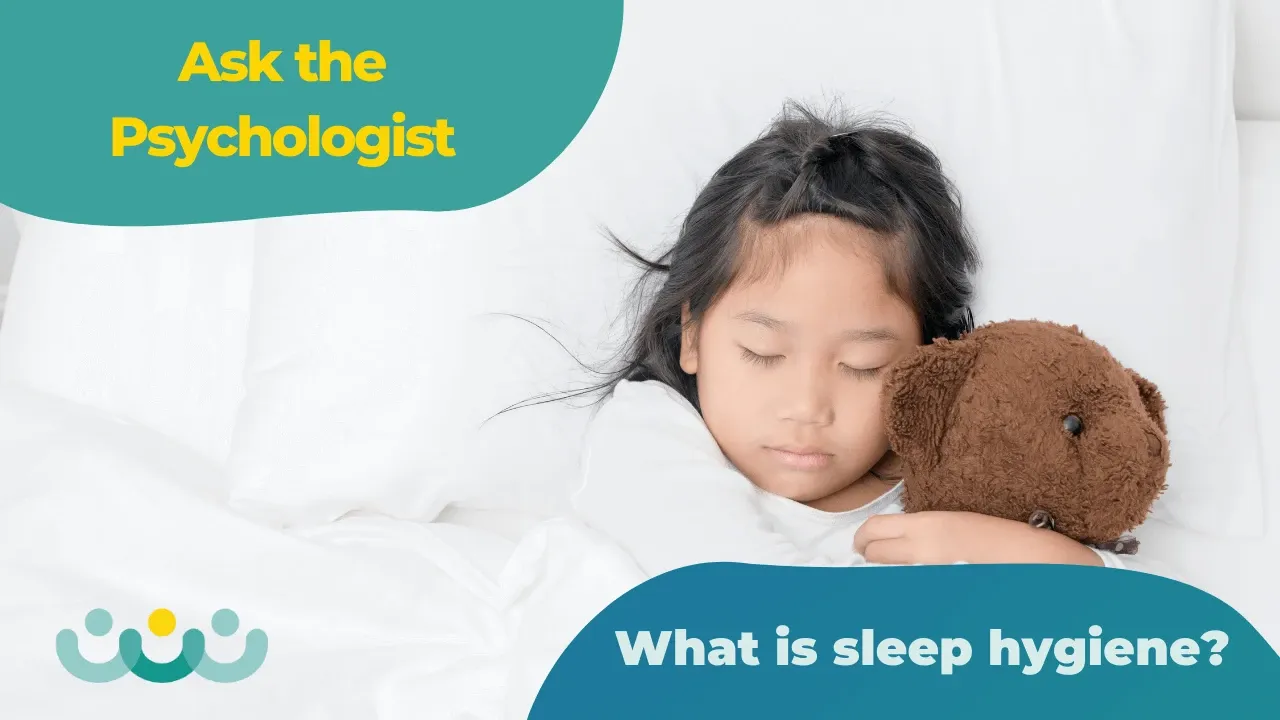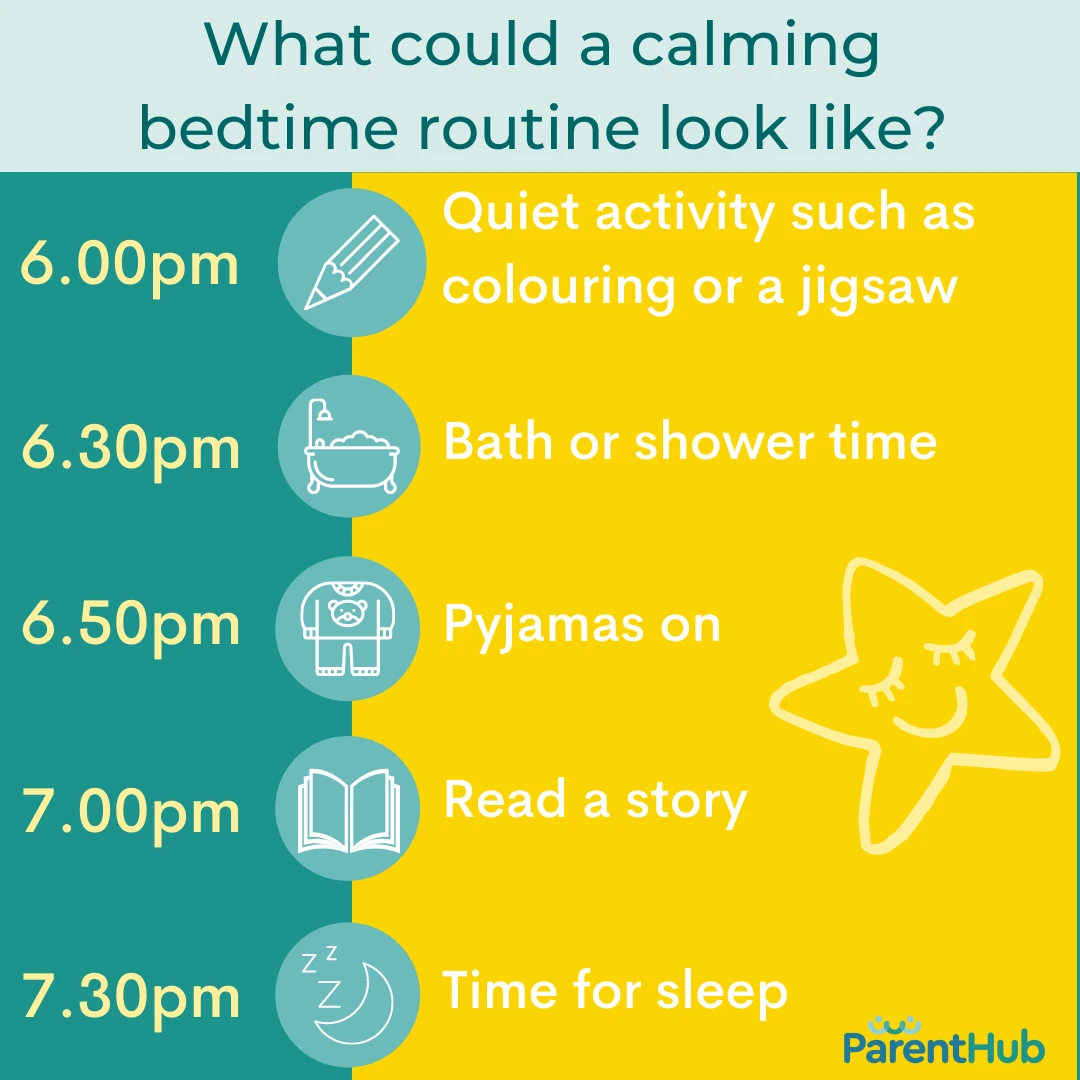Ask the EP | What is Sleep Hygiene?
Nov 15, 2021
What is sleep hygiene? How can it help my child have a better night’s sleep?
What actually is sleep hygiene?
Sleep is a key aspect of development - after all, humans spend up to a third of our lives asleep. Whilst children may look peaceful when fast asleep, they are undergoing processes to support their mental wellbeing, consolidate learning and improve their health at the same time! It is therefore crucial that children get enough good quality sleep.
Paving the way for a better night’s sleep may be as simple as introducing a few habits before and at bedtime. Sleep hygiene refers to these habits and practices that can lead to a better night’s sleep. Are these sleep hygiene habits difficult to introduce you may ask? Good news! You are probably doing some, or most, of them already, but they are some of the easiest changes to introduce if not. You may even find that you can adopt some of these changes to improve your own sleep quality too.
Top tips to improve your child’s sleep hygiene
As mentioned, improving sleep hygiene is one of the easiest changes to make to support your child’s sleep. However, these tips are meant for children with minor sleep difficulties - if you are practicing good sleep hygiene and your child is still finding it difficult to fall or stay asleep, you may wish to speak to your GP or trained professional for more support.

1. Design an achievable bedtime routine
Creating a simple, non-stimulating bedtime routine allows children’s bodies and minds to unwind and prepare for a restful night’s sleep. The predictability of routines helps children to feel safe, as well as giving them an understanding of what to expect and what is expected of them. Consistency is key! There is no ‘one size fits all’ bedtime routine for children - it is about finding a routine that works well for your child and family.
Bedtime routines should be quiet, calm and non-stimulating. A bath or shower is good to incorporate as it drops the child’s body temperature. This produces the sleep chemical melatonin, which further helps children to fall and stay asleep
2. Set a realistic bedtime and wake up time, and stick to it

Children of different ages need different amounts of sleep. Start out by working out how many hours of sleep your child needs. You can then roughly calculate what time your child should fall asleep to have a good amount of rest. From this, we can backtrack further and work out when we need to start the bedtime routine.
Ideally, this bedtime and wake up time should also be stuck to at the weekends and during school holidays. This will help to avoid the common difficulty getting to sleep on a Sunday night or on the last night of the school holidays.
3. Get regular exercise

Research suggests that children who take part in exercise 4-8 hours before bedtime fall asleep faster than children who have not exercised. The time to fall asleep decreases even further when the exercise is taken 3-4 hours before bedtime. Exercise physically tires children out and so increases the need for sleep - their bodies want to recover after exercise, and sleep is a great way to do this.
Exercise also creates chemical activity to make us feel awake. Because of this, physical activity should be avoided 1-2 hours before bedtime to ensure that the brain and body have time to recover from exercising before winding down for sleep.
It is even better if the exercise is taken outside, as exposure to natural light also helps us to sleep. Bright light keeps our 24 hour body clock on track, naturally supporting us to set the timing of our next sleep.
4. Create a sleep friendly environment
Ideally, children should sleep in a cool (between 16 and 18 degrees), dark room with minimal noise. Again, the cool temperature facilitates the production of melatonin to help with sleep. A dark bedroom (e.g. by using a black out blind) makes it easier for the child to stay asleep, particularly in the summer months when the sun rises very early.

However, it is understandably not always possible to achieve all of these things, such as on a hot summer’s day, or if you live near a busy road. These are ideals to strive for, and so focus on making the room as cool/dark/quiet as possible.
5. Implement a screen curfew

Avoiding screen time in the hour before bed can support children to fall asleep faster. Most screens (including televisions, phones and tablets) emit blue light, which reduces melatonin production in children and subsequently delays sleep onset.
Action orientated video games before bedtime can further delay the onset of sleep due to heightened fear and excitement, resulting in an elevated heart rate. For the same reason as avoiding exercise just before bedtime, action video games should be switched off to allow the brain and body to fully unwind. Reading one of your child’s favourite stories is a relaxing, yet not too stimulating, alternative to add to your child’s bedtime routine to replace screen time.
A final note on sleep hygiene
Some of these tips may seem more achievable for your family than others, and that’s ok! These are just the top tips for sleep hygiene practices - some will suit your family and some will not. The most important take home message is to ensure that the sleep hygiene practices you decide to use are both suitable and achievable for you and your family.

If you would like to gain a more in depth understanding of sleep and how to support your child further, access our ‘Sleep Well Series’ by signing up to the Parent Hub here.
References
Nixon, G. M., Thompson, J. M., Han, D. Y., Becroft, D. M., Clark, P. M., Robinson, E., ... & Mitchell, E. A. (2009). Falling asleep: the determinants of sleep latency. Archives of disease in childhood, 94(9), 686-689
Foley, L. S., Maddison, R., Jiang, Y., Marsh, S., Olds, T., & Ridley, K. (2013). Presleep activities and time of sleep onset in children. Pediatrics, 131(2), 276-282..
Stay connected with news and updates!
Sign up to receive updates, resources, inspiring blogs and early access to our courses.
Don't worry, your information will not be shared.

